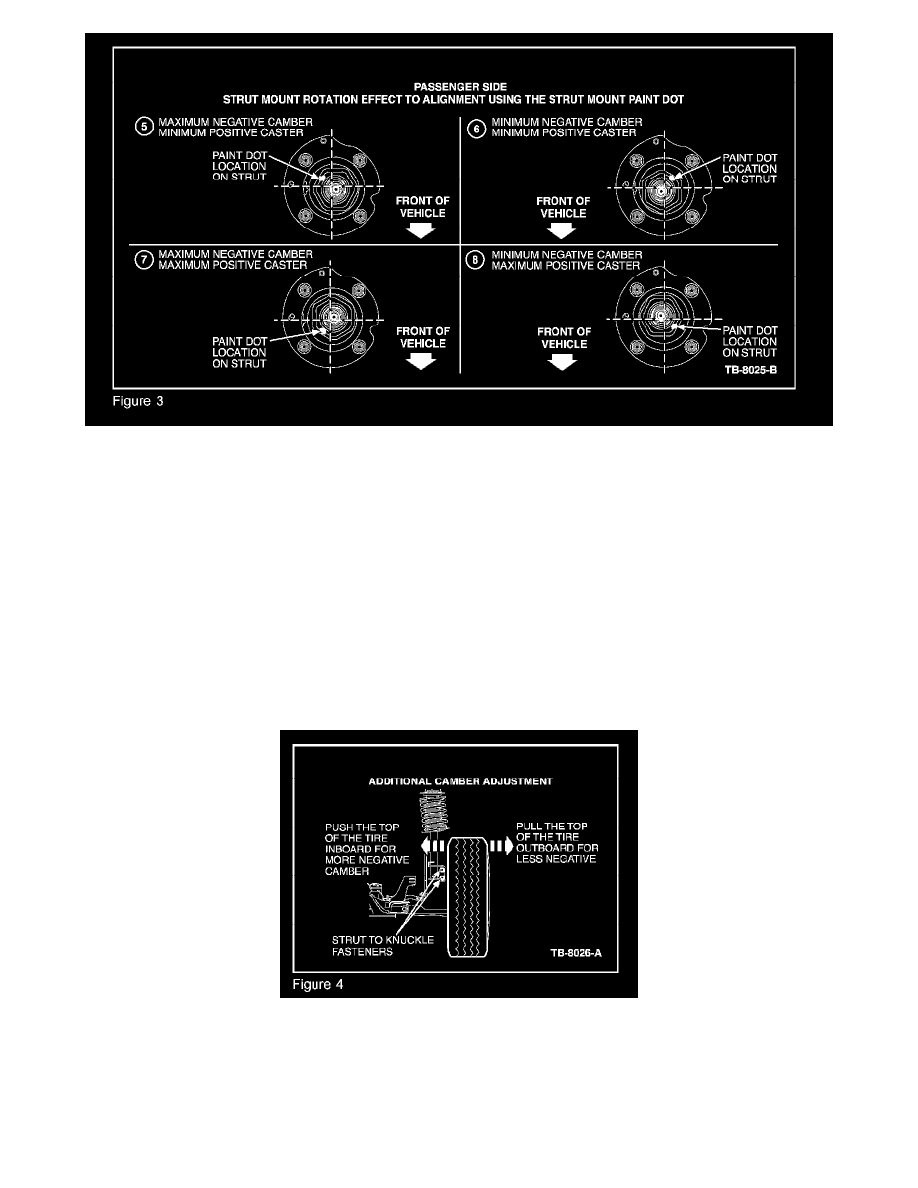Escape AWD V6-3.0L VIN 1 (2004)

Adjustment of camber and caster can be made by rotating the upper strut mount into one (1) of four (4) positions. The orientation of the strut rod relative
to the center of the hole for the mount determines the alignment change. The strut rod is offset 180 degrees from the paint mark on the strut bushing.
Moving the strut rod inboard or outboard changes camber and moving the strut rod forward or rearward changes caster. Regardless of the start setting, a
90 degree rotation will only change one of the settings (caster or camber), and a 180 degree rotation will change both settings (caster and camber).
ADDITIONAL FRONT CAMBER ADJUSTMENT:
The clearance between the bolts and the holes in the knuckle to strut joint allows front camber adjustment beyond what the strut mount orientation
provides. This additional adjustment can be used on either of the front wheels to increase or decrease a camber split.
Rotating the upper strut mount is the primary and preferred method to adjust front camber. If rotating the upper strut mount does not provide enough
camber adjustment, perform the following steps to achieve an approximate camber change of up to +/- 0.24 degrees per side:
1.
Lift the vehicle up off its tires.
2.
Replace the old strut to knuckle fasteners (bolts and nuts) with new fasteners, but do not torque the new fasteners.
3.
Move the top of the tire inboard or outboard to adjust camber (Figure 4).
a.
If more negative camber is desired, push the top of the tire inboard.
b.
If less negative camber is desired, pull the top of the tire outboard.
4.
With the tire at the desired position, torque the new fasteners to 85 lb-ft (115 N.m).
